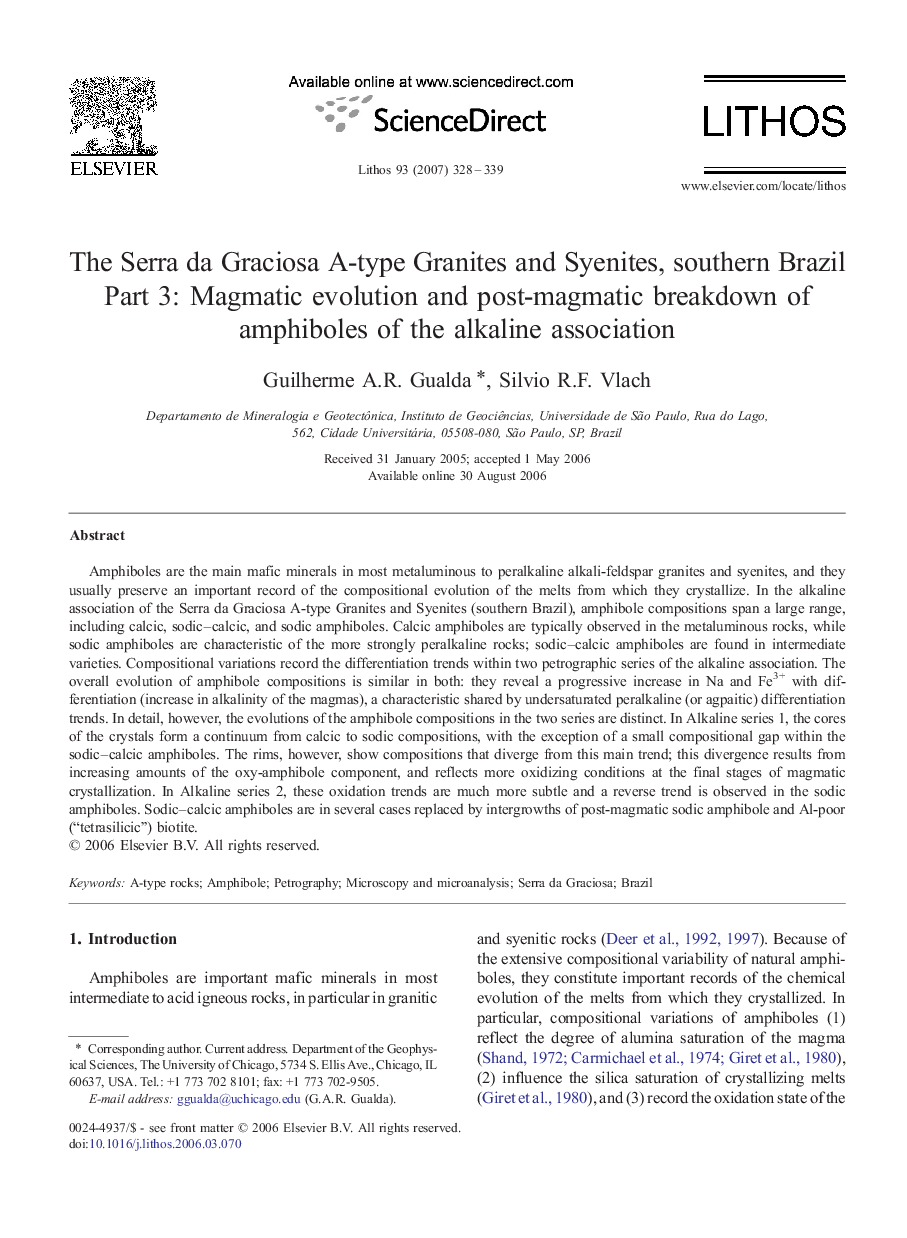| Article ID | Journal | Published Year | Pages | File Type |
|---|---|---|---|---|
| 4717956 | Lithos | 2007 | 12 Pages |
Amphiboles are the main mafic minerals in most metaluminous to peralkaline alkali-feldspar granites and syenites, and they usually preserve an important record of the compositional evolution of the melts from which they crystallize. In the alkaline association of the Serra da Graciosa A-type Granites and Syenites (southern Brazil), amphibole compositions span a large range, including calcic, sodic–calcic, and sodic amphiboles. Calcic amphiboles are typically observed in the metaluminous rocks, while sodic amphiboles are characteristic of the more strongly peralkaline rocks; sodic–calcic amphiboles are found in intermediate varieties. Compositional variations record the differentiation trends within two petrographic series of the alkaline association. The overall evolution of amphibole compositions is similar in both: they reveal a progressive increase in Na and Fe3+ with differentiation (increase in alkalinity of the magmas), a characteristic shared by undersaturated peralkaline (or agpaitic) differentiation trends. In detail, however, the evolutions of the amphibole compositions in the two series are distinct. In Alkaline series 1, the cores of the crystals form a continuum from calcic to sodic compositions, with the exception of a small compositional gap within the sodic–calcic amphiboles. The rims, however, show compositions that diverge from this main trend; this divergence results from increasing amounts of the oxy-amphibole component, and reflects more oxidizing conditions at the final stages of magmatic crystallization. In Alkaline series 2, these oxidation trends are much more subtle and a reverse trend is observed in the sodic amphiboles. Sodic–calcic amphiboles are in several cases replaced by intergrowths of post-magmatic sodic amphibole and Al-poor (“tetrasilicic”) biotite.
